[Disclosure: Please assume all outbound links may in some cases provide site-sustaining revenue from ads or referrals (with never any extra costs to you). See footer for more details. Thank you]
The Best Whole House Air Purifiers Offer Silent and Simultaneous Air Cleaning of Every Room Using Your Furnace HVAC System
The best Whole House Air Purifiers offer cost-effective and highly efficient particulate filtration for allergy and asthma relief in every room of your house using your existing forced heating and air conditioning system.
But you must go beyond regular cheap disposable Filtrete furnace air filters which may offer much less efficiency and too little filtration surface area.
Regular disposable duct air filters often become clogged quickly, and allow dirty air to by-pass around the filter itself. Thus frequent filter replacement is needed to prevent HVAC system damage or loss of performance and efficiency.
A better alternative to constantly buying mediocre furnace filters is to install a top of the line whole house air purifier that will give you more filtration bang for your buck and less need for frequent replacement filters.
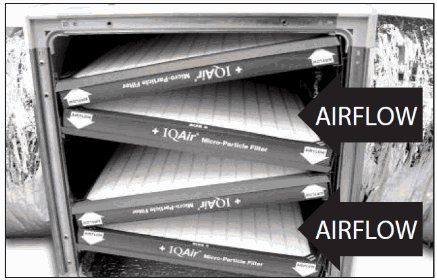
|
|
|
The best Furnace air purifiers have superior MERV16 filtration efficiency, which is the best you can get. Your whole house air purifier should also offer long maintenance-free periods of over a year.
MERV-16 furnace filters will remove at least 95% of 0.3 micron or larger sized particles without frequent filter replacement.
To maintain this high level of efficient filtration over extended periods without the need for frequent filter replacement your best air conditioner purifier will incorporate a leak free return air duct filtration box with V-shaped configurations of multiple microfilters.
This V-orientation of multiple MERV-16 micro-filters maximizes the filtration surface area which allows more opportunity for air to pass through while still being cleaned to a very high standard for a longer time than traditional furnace filters.
This V-design also minimizes back pressure ahead of the furnace filters, and it minimizes resistance through the whole house air purifier.
Reducing air impedence keeps the blower from having to work too hard to pull air through as the filters become dirtier as a result of collecting more particles from the air over time. This prevents damage to your HVAC system and will provide the most energy efficient filtration and air conditioning.
Click Image Below to Compare the Industry Leading Aprilaire Whole House Air Purifiers and Whole Home Ducted Air Cleaners
Aprilaire whole house air purification systems are top ranked in the industry for their ability to cost-effectively and efficiently remove allergy and asthma triggering indoor air pollutants from all your indoor living spaces.
The below leading Aprilaire whole house air cleaners are integrated into your HVAC system (heating, ventilation and air-conditioning system) and filter the air after your central air handling system blower pulls it into your return air vent.
Particles are captured or removed from the air via high efficiency filters and/or electrostatic air purification. Purified air is then distributed via your air duct system to the rooms and spaces of your home.
The longer your blower circulates air throughout your home, the more particles are removed with each pass through the Aprilaire central air cleaners. This is a great method of cleaning indoor air throughout your entire home, especially during times of the year when ventilation with outside air is not practical due to temperature extremes, outside humidity, and costs to cool and heat, such as winter and summer, when windows are kept sealed shut.
Click Image Below to See More Details on These Leading Aprilaire whole house air purification systems
Video Demonstrating IQAir Perfect 16 Whole House Air Purifier Drastically Reducing Air Particulates
Whole House Air Purifiers and Furnace Filters Usually Will Not Filter Out Gaseous Pollutants
Just keep in mind that even the best furnace air purifiers are not designed to filter out the many harmful gases which most homes accumulate and off-gas and which may cause many of our worst respiratory symptoms.
So whole house systems can augment good quality room air cleaners with gas-phase filtration, but they can not totally replace them.
Speaking of gases, one the most dangerous is Ozone gas which can damage your lungs. Some whole house air cleaners are marketed as being "Central Ionic Air Purifiers" and may emit Ozone into your indoor air. Beware of the buzz words: "Ionic", "Electrostatic", "Ionizer", "Activated Oxygen", "Ozonator", or "Ozone Generator".
Here is my guide to Ozone Air Purifiers and Cleaners
The best furnace air purifier will capture a good percentage of the finest suspended particles wafting through your indoor environment. And removing these solids will help keep them from clogging the prefilters, HEPA filters, and gas filters in your best room air cleaners.
This will save you even more money on expensive replacement filters and give you a back-up system of overall whole house filtration, beside just local room air cleaning.
|
Tip: For best results I recommend source control plus using the best rated home air purifier in your rooms, and also incorporating the best rated central air purifier in your return air duct too. This is a winning healthy home strategy, especially for those who suffer from:
|
Why just have room air cleaners when you can simultaneously clean the air in your entire home and extend the life of your portable room air cleaners with one central air purifier installed in your HVAC duct system?
Put your hand against your HVAC system return air duct vent while the air conditioner is running and you will feel how much air gets pulled into the main return air duct. You can use this pressure to your advantage.
This air is being returned or sucked back to the blower unit from all rooms in your house, so an in-duct air purifier where all this dirty air culminates is a strategic local for a whole house system of purification.
If you have central air conditioning or other type of forced air HVAC system you should consider an in-duct furnace air purifier system as part of your overall strategy for improving your indoor air quality.
A whole house air purifier allows you to kill two birds with one stone and leverage your air handler's energy use by also cleaning that large volume of quickly circulating air. Why just condition it when you can clean it within the same system too?
That air is going to circulate during heating ventillation in winter AND during air conditioning in summer too, so you might as well purify it all the while.
Central air purifiers are such a no-brainer because they allow you to piggy back off of an already existing house-wide system for moving air through every room, yet which is usually only being used for a single purpose.
And thanks to new HVAC household air purifier technology they are quickly gaining popularity as an important part of the best air purifier systems in newer homes and as retrofits in older homes too.
In duct air filtration systems are also used as industrial room air purifiers in cleanroom applications and in medical settings such as for hospital air delivery systems. The rise in Staph infections is one reason they are frequently being installed in hospital HVAC systems.
Whole house air purifier systems can be very cost effective and convenient for homeowners because they can improve the air quality in your entire home automatically and quietly using your existing HVAC air handling ductwork and blower system.
Whole House Air Cleaners are Silent Air Cleaners
There are no additional moving parts for fans or motors required, just the filters and housing the air gets pulled through. They are truly silent air purifiers and simple to install and maintain.
This often results in a cost per square footage of treated air much below what it would cost to treat all the square footage of your home with individual room air cleaners.
Could you imagine running an air purifier at full blast in every room of your home to achieve the clean air delivery rate of the best whole house air purifiers?
In a larger home with cathedral ceilings, the cost of all those units would far exceed that of even the very best central air purifier. You would also have a ton of expensive filters to constantly replace. Your electricity bill would suffer. And the noise from all those air purifiers droning endlessly throughout your home would be unbearable.
A whole house air purifier on the other hand would be totally silent because they do not require a seperate fan and motor. They filter the air that returns to your central air blower. So there would be no additional noise over what your HVAC system already creates.
Your duct work system would essentially connect every room in your house to your whole house air purifier. So your entire HVAC system gets converted into a large-scale home air purifier system.
And the HVAC blower moves large volumes of air through those ducts creating a low pressure area on the return side. So all that forced air will move down the pressure gradient from your rooms and back to the point of lowest pressure at the return air duct and through the central air purifier inside.
So all the air in your home ends up getting pulled through special microfiber filters when the blower is working.
The best central air purifiers will efficiently remove dust, pet dander, smoke, pollen, mold spores, dust mite body parts, and dust mite feces. Your whole house air purifier can greatly help to reduce Nasal Allergies.
Just keep in mind that Whole House Air Purification using Microfilters is for particle filtering and will not filter out household odors such as from pets and cooking, nor will those filters capture Volatile Organic Compounds like Formaldehyde or toxic gases from cigarette smoke.
The job of VOC gas filtration is best performed by a high quality true HEPA Room Air Purifier that is also certified for gas removal, which means it will contain gas cartridges or filters with at least several pounds of Activated Carbon or chemisorptive media such as Zeolite. Central Air Purifiers are but one facet to an effective strategy for air cleaning.
They can be a great part of a healthy home system to control indoor allergy symptoms all while making your home more comfortable.
Get the Maximum Rated Whole House MERV Filters
|
Tip: To assure that at least 95% of .3 micron or larger sized particles are filtered out, I recommend you buy a whole house system with Micro-fiber filters certified with a MERV 16 filtration rating.
MERV stands for Minimum Efficiency Reporting Value and is a standardized measure of how efficiently furnace air filters clean the air. |
MERV 16 is currently the highest filtration rating available from the American Society of Heating and Refrigeration Engineers (ASHRAE). These best rated furnace filters will supply filtration efficiency up to a hundred times better than most furnace filters.
Just remember that a central air purifier will not purifier your indoor air constantly unless the blower is kept running constantly. The air must be moving through your ducts in order for a whole house system to clean it.
Furnace Air Purifiers and Blower Run Time
Most HVAC system blowers are controlled automatically via a programmable thermostat that only circulates the air in responce to inside temperature. So HVAC blowers typically cycle between on and off many times a day depending on the home's energy efficiency, size, location, and season.
The blower will usually kick on when the HVAC air compressor is signaled to run for either cooling or heating. Air will then be filtered through the central air purifier.
But when the ambient temperature is again well maintained to the set thermostat temperature, the blower and compressor will cut off again.
| Tip: For best results I recommend a whole house air purifier system be configured to treat the air in your home for at least 12 hours. You do that by making sure your HVAC blower circulates air through the system a total of 12 hours or more. |
In Fall and Spring when temperatures inside may be near optimal, your air handler may not cut on at all. So getting 12 hours of daily circulation can be a challenge for most home owners during the temperate seasons.
Your HVAC thermostat will likely have a "fan" setting, which you can manually turn on. This will cause the air handler to run 24 hours a day regardless of whether the compressor is running or not. That is one solution. But it will cost you more in electricity and will quicken the need for replacement furnace filters.
Programmable Digital Air Handler Controller
| Tip: Another solution that will save you money on electricity and replacement filters in the long-term is to buy a digital Air Handler Controller for under $100 to assure your blower runs for at least 12 hours out of a day. This will assure your central air purifier is filtering air 12 hours a day as well. |
Air handler controllers have a microprocessor that counts the amount of time the blower runs for air conditioning or heating and supplements any shortfall to the desired run times you program in by turning on the HVAC blower in the mean time.
For example, you can set your air handler controller to run your HVAC blower for a cumulative 30 minutes, then cut off for 30 minutes. It will keep track of and substract from this cycle any blower time actually prompted by cooling or heating because filtration would have been occuring during that time.
So if it is Springtime and 70 degree outside and no heating or air conditioning is required inside, the HVAC blower will run a total of 12 hours in a day and you will have whole house air cleaning occuring during those blower on times.
But no matter how much you run your blower, just keep in mind a whole house central air purifier is no magic bullet to all indoor air pollution issues.
Central air filtration can greatly augment an air purification system which includes the use of true HEPA and gas filtering room air cleaners.
But maintaining a healthy home is a complex endeavor with many variables. Air cleaning is basically only a stop gap measure. Don't forget that source control is also very important.
No Whole House Air Purifier will Protect You From Deadly Radon Gas
| Tip: Have your home tested for Radon gas. No matter what furnace filtration or room air cleaners you employ, you should still have your home tested for Radon gas to see if mitigation measures are needed. Radon is not a cause of indoor allergies and you can not tell when you are breathing it, but it is a commonly overlooked indoor air issue which contributes to the death of thousands of people annually. |
Most homes have some level of Radon gas originating from granitic rocks in the Earth below, but you likely will not know you are breathing it unless you test your home for it.
In fact, if you live in North America or in a rocky or mountainous region, you are more than likely inhaling some level of Radon gas right now. Can you feel it? No. Can you see it? No. Can you smell it? No.
But radon is the second leading cause of lung cancer, and without testing for Radon gas there is no way to tell if you are breathing high levels of it.
There is no air purification system that can totally protect you from Radon, not even a central air purifier or a home air purifier loaded with many pounds of Activated carbon would be able to effectively capture and retain enough Radon gas molecules to keep it from being inhaled.
But there is some evidence that dust particles can carry the radiation emitting radioactive decay products from Radon deep into our lungs and airways.
So in those cases, dust removal via a true HEPA air purifier when combined with whole house air purifiers may help with controlling dustborne Radon decay product inhalation.
But that is a long shot and Radon mitigation measures such as airtight crawlspace vapor barriers, ventilation fans, air suction pumps, and exhaust pipes are the only way to stop Radon from entering your home. Always look to source control before anything else.
For everything you could ever want to know about Radon Gas visit my extensive Radon Gas Guide.
Speaking of source control, also consider removing dangerous household chemicals because they may introduce volatile chemical toxins and residues into your indoor air. Manmade chemicals are another major cause of Sick Building Syndrome and indoor air pollution.
Source Control of Hazardous Household Chemicals
|
Tip: Do not overlook what chemical products you may have stored under your house, in your garage, in the attic, or in the basement. Temperature extremes in these areas can cause off-gasing of noxious vapors from containers and gases can easily diffuse through flooring and walls into your living space.
Because furnace air purifiers typically do not include gas filter technology like Zeolite or Activated Carbon, a whole house air purifier will simply circulate these pollutants throughout your entire home. So source control is very important. Also, if you have your ducts cleaned, as I suggest below, I would hire a professional duct cleaning service that does not use any toxic air duct cleaning chemicals. If they claim "green cleaning" of ducts make sure you verify exactly what that means. |
I grew up in an older home that had many potent pesticides, gasoline cans, pool chemicals - including a large drum of chlorine tablets, and many cans of paint and paint thinner stored in the crawlspace.
The chemical odor was overpowering in the crawlspace and basement. The Chlorine gas was the worst. It would literally make you choke and your would immediately start to burn.
I am certain these gases were rising up through the floor boards and into the house. I told my parents the chemicals were poisoning our air, but like most people they were oblivious to the dangers of household chemicals and indoor air pollution.
Even if we'd had the best whole house air purifier with the ability to capture volatile organic chemicals (VOC), it would probaly have been overwhelmed by the volume of gases.
Gas filtration in even the best rated home air purifier is only able to handle low level odor and gas pollution.
Once the chemical adsorptive media such as Activated Carbon or Zeolite become saturated, no more gas molecules will be removed from the air and they will pass through the filters and back out into the room.
So do not assume whole house air purifiers or room air cleaners are magic bullets. The low hanging fruit is source control. Do nothing until you do your best to elliminate pollutant sources.
For years living in that old chemical stocked house I suffered from dermatitis, chronic allergy symptoms, and headaches that seemed to go away every time I was away from home for any length of time.
And when I later moved to my own home and my allergy symptoms immediately disappeared permanently, I realized I had probably been suffering from Sick Building Syndrome for years while living in that old toxic house.
My Sick Building Syndrome experience is but one reason why I am so passionate about helping people understand how household chemicals can slowly poison us.
There are multiple dividends that you will earn by finding safer substitutes for the toxic chemicals we have all been brainwashed into thinking are safe and required.
You will save money, reduce pollution, save resources, improve your indoor environment, and improve your health by avoiding toxic chemical products.
There are many safe, effective, and environmentally friendly household products available in stores now. So before I even consider air cleaning via a central air purifier or room air cleaner, I would first focus on source control by removing and substituting with safer alternatives.
If you have old toxic products you wish to remove from your home for Pete's sake please do not throw them in the trash or dump them down your drains. Call you city to find out if there are chemical pick up sites or collection points so they can be safely removed without harm to you or the environment.
Trust me, once you change your thinking from what industry wanted you to believe, you will wonder how you were ever Brainwashed into buying all those poisons, pesticides, paints, laquers, paint thinners, bug sprays, frangrances, pool chemicals, and chemical solvents.
For an extensive guide for learning what is in household chemicals throughout your home and how to safely store, use, dispose of, and substitute with safe non-toxic green cleaning products and other green alternatives, you can visit my Household Chemical Encyclopedia.
Dustmite Allergies, Pet Dander, and Mold Spores Require More Than Furnace Air Purifiers
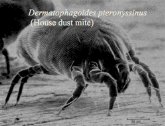
|
|
Dust mite allergies are caused by Dustmite feces and body parts you inhale.
There can be millions of dust mites in your bedding when conditions are ideal for them to reproduce. |
Additional steps need to be taken to control dust mites, pet dander, and mold spores which can settle out in all your rooms.
After settling out of the air, a whole house air purifier will not suck these tiny potent allergy triggers off your pillows, bedding, curtains, floors, or furniture.
These pollutants will settle out and stick to objects and be held there with faint electrostatic forces until a greater force such as the breeze from someone walking by makes them airborne again.
So furnace Air filtration is but one method needed to minimize indoor air pollutants.
For example, maintaining proper humidity levels will help to reduce dust mites, mold, and mildew. I also recommend you use special hypoallergenic Dustmite-proof bedding.
A high quality true HEPA vacuum cleaner or central vacuum cleaner will remove fine dust mite allergens and other particulates before they can become airborne again.
And because Dustmites thrive in a warm and humid house, a dehumidifier will keep your indoor air drier and will help reduce their populations.
Dehumidification will also help reduce mold and mildew allergies assuming you fix any water leaks or wet areas that may have resulted from water damage to your home.
These techniques together with a whole house air purifier and true HEPA room air cleaners will greatly reduce the allergens that precipitate when the blower cuts off or where the return air currents slow down under, over, or around objects.
Have Your HVAC System Leak Checked
|
Tip: Before investing in the best whole house air purifier you may want to have a home energy audit performed which includes leak testing of your HVAC air ducts.
Any leaks in your air ducts will not only reduce the energy efficiency of your home due to heating and cooling loses, but air duct leaks may also reduce the filtration efficiency of a whole house filtration system. |
Poor air duct insulation and leaks allowing cool air to escape in non-living space areas like a crawlspace or attic can also increase condensation of water vapor on cool surfaces like copper pipes and foil wrapped ducts.
Condensation will often lead to mold and mildew issues, especially in Summer.
Toxic black mold spores is a very serious cause of Sick Building Syndrome and toxic black mold growth often originates where there is condensation or water damage to wood or drywall.
River of Indoor Air
Keep in mind that your forced air system essentially drives a river of air to flow through your rooms and hallways.
Much like the river of air in our atmosphere (the Jet Stream) is diverted and accelerated up and over mountain ranges, the flow rate of air inside our homes is also affected by obstructions like doorways and furniture.
Precipitation of suspended particles can occur when that river of air encounters friction from obstructions because the air velocity will slow down on the leeward side of those obstructions.
|
Tip: Wall to wall carpeting is often composed of synthetic petroleum based chemicals which have been shown in some cases to off-gas toxic vapors into your home for many years.
Carpet is also one of those air friction points, so as drag slows air flow over it, particulates from the air settle out onto it. Carpet becomes like a reservoir of allergens like pollen, pet dander, mold spores, dustmites, and fine household dust and dirt. When pets and people walk over the carpet these indoor air pollutants get released back into your air. So consider hardwood or better still, ceramic flooring for a healthier and easier to keep clean alternative. |
Like any river, the inside of your home has many of these areas of air drag where obstacles interfere with the fluid's flow. But like wind, the air will take the path of least resistance from high pressure to low pressure.
Like a river rushing through a mountain valley, the air being forced to blow out of central air vents into rooms (high pressure areas) will rush back toward the pressure sink which is created by the HVAC blower fan evacuating or removing air on the return side in a home air handling system (the low pressure area).
Air duct leaks can prevent this closed system from circulating that air back to the blower because air will rush in from outside to equilibrate the pressure, rather than indoor air getting pulled back to the return air duct. This will reduce the effectiveness of a whole house air purifier system.
In our homes the river of air flows down the pressure gradient from high pressure to low pressure. This inside pressure gradient is like the gravitational pull on the water molecules flowing down the mountain valley. A leaky HVAC system is like flattening out the valley which causes the river of air to meander very slowly and particles to settle out like silt depositing in a lowland coastal river sytem.
You want a mountain river flowing through your home, NOT a tidal marsh. So have your HVAC system checked for air leaks.
In a whole house system as this river of air rushes to the lowest pressure area in your home drag increases over carpeting, and under furniture. Room corners will be somewhat cut off from the mainstream of air and this creates eddies and whirlpools such as those found at the inside bends in rivers or behind rocks in river rapids.
These are micro low pressure areas where particles will drop out in much the same way as sand bars form at the inside bends of rivers. So a whole house air purifier will not be able to filter out those particles that settle out of the air.
| Tip: Running ceiling fans in your rooms can help mix the air and keep particles suspended longer so they make it into the central air filter system. Ceiling fans also improve heating and cooling efficiency by increasing room temperature uniformity for a more accurate return air thermostat reading. |
Hopefully the above river annalogy helps you visualize why a whole house air purifier will only be able to filter out those pollutants which remain suspended in the indoor river of air. I also hope it illustrates why source control is so important.
Your diaphram and lungs create a low pressure area too. So if you get between a source of off-gasing and the return air duct, you can still inhale those allergens. So a healthy home depends on a multi-faceted plan of action as outlined above.
Have Your Air Ducts Cleaned Before You Buy A Whole House Air Purifier
|
Tip: Before having a whole house air purifier system installed you may want to consider a reputable company with proven expertise at thoroughly cleaning air ducts.
If your air ducts are filled with dirt and mold, this will nullify any benefits of having a whole house filtration system installed. |
It is never a bad idea to have your air ducts cleaned, whole house air purifier or not. Dirty air ducts is common to most homes and is a major source of perpetual indoor allergen contamination.
With a whole house system installed it is important that the air exits the ventilation ducts clean. If it immediately becomes contaminated within your HVAC room air ducts, this dirty air is what you will constantly breath as it exits the vents in every room regardless of how efficiently your central air filter may clean it each time.
Just be sure to carefully do your due diligence before hiring an air duct cleaning company because it is a service business rife with scammers and fly by night con artists. Ask for several references and check with the Better Business Bureau or Angie's List.
I would insist on a professional duct cleaning service that does not use ANY hazardous cleaning chemicals. Chemical-free duct cleaning using steam, or in the least green cleaning chemicals, is preferred.
I would also make sure that if contractors use an air duct vacuum cleaning system, that it not allow any particulates to re-enter the house while the ducts are being cleaned.
Something like a whole house central vacuum system that expels 100% of all vacuumed particles directly outside is ideal. But in the least any air duct vacuuming should vent air through true HEPA filters if it is not a central vac.
These are all points I would strongly question the duct cleaners on.
The Best Whole House Air Purifiers
| Tip: Make sure a household air purifier comes with professional installation and follow-up efficiency testing to assure you are getting your money's worth. |
The best central air cleaners, such as IQAir Whole House Air Purifier Perfect 16, will include expert installation and in home particle testing with air analyzers that will assure exacting installation and performance.
The high efficiency microfiber filters are also long lasting - only needing replacement after 3 years in the average home HVAC system operated 50% of the time.
Whole House UV Air Purifiers and Ionizers
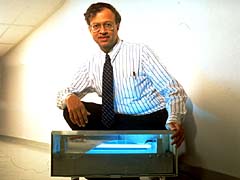
|
| Whole House UV Air Purifiers may not completely sterilize the air, will not remove pollutants, and may produce harmful Ozone gas. |
|
Tip: If you see central air purifier systems marketed as incorporating a "home uv air purifier" or consisting of just an in duct UV lamp beware that the technology is new and controversial and will not replace the particle filtration offered by high MERV rated micro-filters. UV purification may also produce harmful Ozone gas.
Also be skeptical of any wholehouse air purification system advertised as including electrostatic precipitators, ionizers, or ionic air purifiers for your entire house. These too may produce ozone. |
UV air purifiers attempt to utilize the sterilizing power of Ultra-Violet light to neutralize biological pollutants like mold, bacteria, and viruses. Ultra Violet lamps have gained popularity for central air cleaning in homes and for air sterilizers in industrial air purifiers as well.
However, there are several drawbacks to an in duct UV air purifier. The UV lightbulbs are very expensive to replace. UV light requires a certain amount of exposure time and intensity to neutralize certain biological pollutants.
Most UV lightbulbs are too low in power to be of much effect. And the higher powered ultra violet lights often incorporated into an industrial air purifier and sanitizer are not very energy efficient.
There is also the issue of how long biological pollutants must be exposed to UV light before they are sterilized. Ideally a UV air purifier system would involve treating slow moving air.
But the rapidly moving air within an HVAC system makes UV sterilization an incomplete process because the exposure time is short and even brief exposure does not guarantee the ultra violet light will cause enough damage to microorganisms to deactivate them.
Also keep in mind that a whole house air purifier with only Ultra Violet lamps will not really do much to physically remove allergens from your indoor air. Even the particles which do become deactivated or sterilized are still wafting through the air after being blown out of the room air vents.
UV light rays are like little high energy bullets that can damage the DNA, RNA, or genetic apparatus molecules used for cell division and replication.
So Ultra Violet light treatment can make some bioaerosols less infectious by rendering them unable to hijack a host's cell division mechanisms or unable to directly replicate themselves. But the UV does not totally destroy germs or make them inert to causing allergies.
This is because even viral, bacterial, and fungal external shell molecules are foreign bodies to our immune system, and when inhaled they can still trigger an immune response.
But when combined with true HEPA filter and MERV-16 quality particle filtration, industrial air purifiers with UV lamps may be an affective way to help reduce infections and prevent particle inhalation.
An HVAC industrial air purifier with UV sterilizer would fit well in a hospital setting where ultra pure air for infection control is an absolute must.
By using high powered and multiple UV air sterilizers to damage the genome of biological air pollutants, and using microfiltration to filter them out of the air, UV light treatment of central air is gaining popularity as a proven method of industrial and Hospital air purification and control of infections.
| Find It Fast: Search Home Air Purifier Expert.com |

|
Return to the top of page
Done with Whole House Air Purifiers - return to Home Air Purifier Home Page
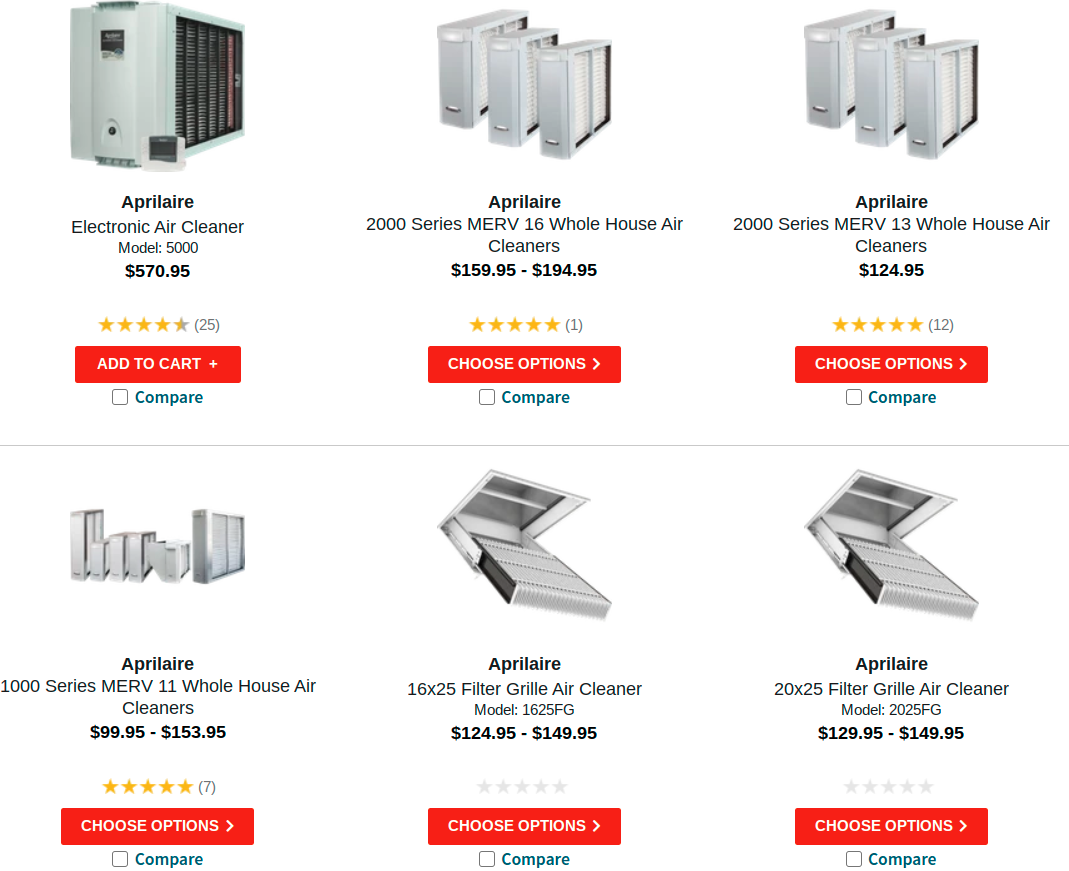

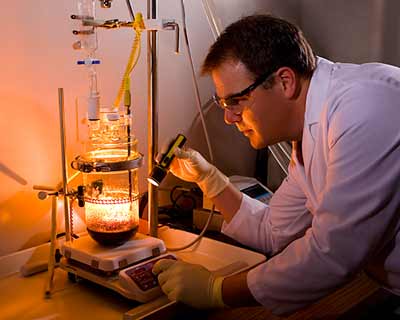

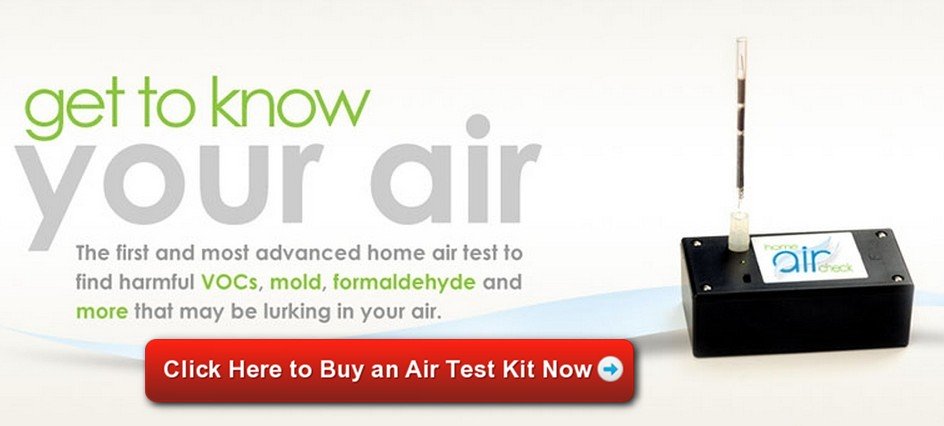
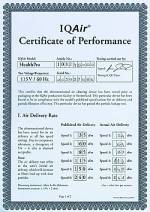
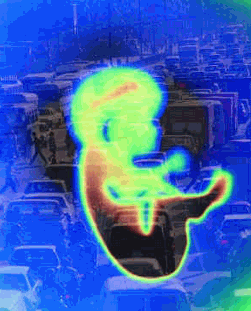
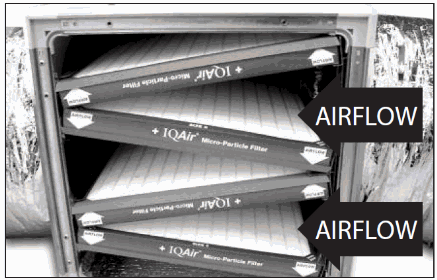
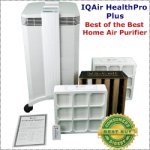
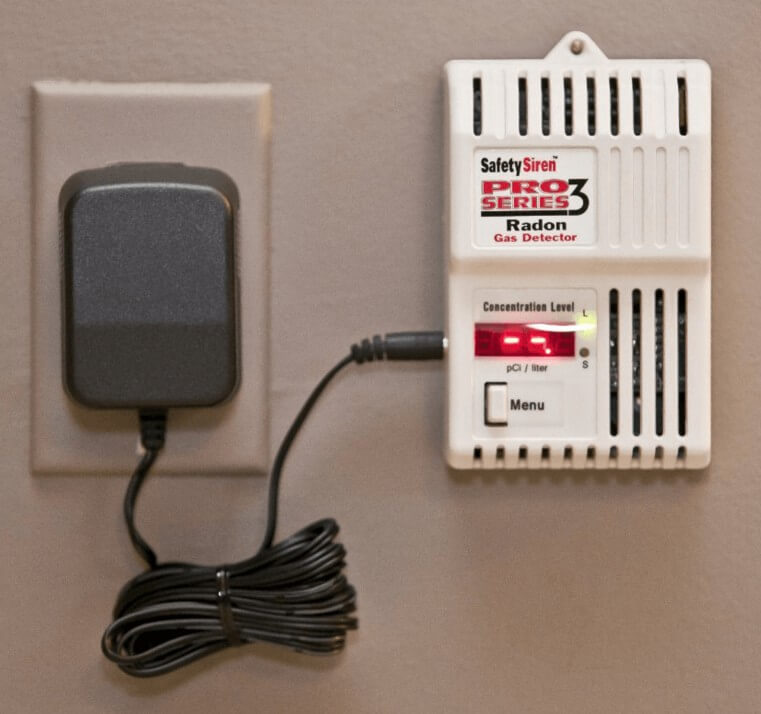




New! Comments
Have your say about what you just read! Leave me a comment in the box below.